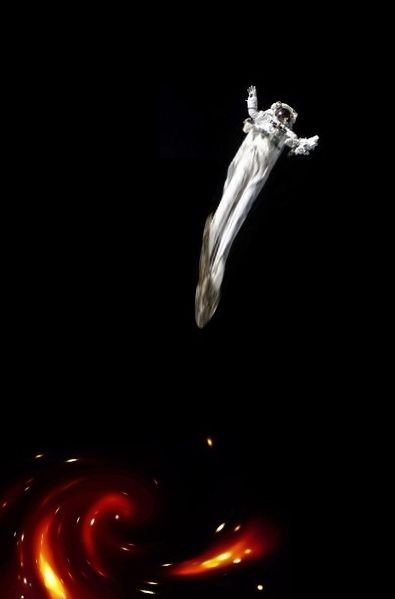What happens if you approach a Black Hole.

Souce
Jeremy Schnittman, an astrophysicist at NASA's Goddard Space Flight Center, has created a video about what would happen in two cases, one of which would be a flyby over a black hole and the other what would happen if we fell into one.

Souce
The astronaut's body will stretch in a process known as Spaghettification and which was first described by physicist Stephen Hawking in his book, A Brief History of Time, and although it may sound nice, it is not fun at all, the astronaut's muscles will stretch. tearing and will end up transforming into an elongated mass of flesh and blood, then its molecules, its atoms, its subatomic particles will break, in the end everything that once gave shape and life to the astronaut will end up uniting into what is within the event horizon.
But what would happen with a supermassive black hole because then we would have a chance, which is what we see in the animation created by Schnittman, the event horizon of the simulated supermassive black hole of 4.3 million solar masses is 25 million kilometers in diameter , if the earth transformed into a black hole would only be 18 mm, trying to reach the event horizon of a small black hole would be like trying to cross the blades of a chopper, you would not survive, but if the chopper were gigantic and had blades worth millions kilometers long, you might have a chance of crossing it.
There is another option, another possible trip that the NASA video also shows us, and that is for the astronaut's ship to orbit near the event horizon, but without crossing it, that is, to do an overflight, and then return to the ship. mother ship, in that case the astronaut's flight would last about 6 hours. Although for his companions on the mother ship it would have been 6 hours and 36 minutes. This is because time passes more slowly near a strong gravitational source and also when moving near it. of the speed of light.
Thank you for visiting my blog. If you like posts about #science, #planet, #politics, #rights #crypto, #traveling and discovering secrets and beauties of the #universe, feel free to Follow me as these are the topics I write about the most. Have a wonderful day and stay on this great platform :) :)